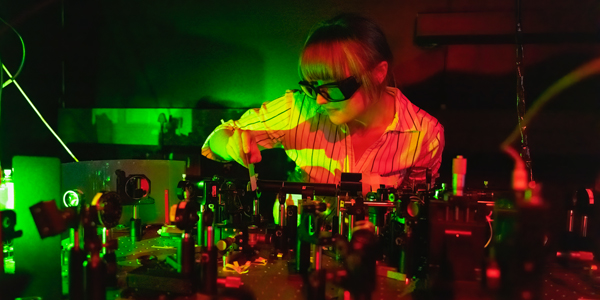A groundbreaking breakthrough by researchers at the University of the Witwatersrand and ICFO – The Institute of Photonic Sciences, Spain, is propelling quantum communication to new heights. In a recently published study in Nature Communications, scientists demonstrated the teleportation-like transport of intricate “patterns” of light, marking a monumental leap towards creating a secure quantum network for high-dimensional entangled states.
The innovation lies in transporting images across a network without physically sending the image itself, accomplished through a teleportation-inspired configuration. Unlike conventional methods where information is physically transmitted, this approach allows the information to seemingly teleport without traversing the communication connection.
Lead researcher Professor Andrew Forbes, likening the achievement to a ‘Star Trek’ technology made real, emphasizes its significance: “Now, it is possible to teleport information so that it never physically travels across the connection.”
The experiment showcased the first-ever quantum transport of high-dimensional states using only two entangled photons, eliminating the necessity for additional photons. Leveraging a nonlinear optical detector, the team achieved a state-of-the-art 15 dimensions, a milestone with implications for establishing quantum network connections with extensive information capacity.
Real-World Applications: Securing Sensitive Information
The implications extend beyond the scientific realm. In a hypothetical scenario where a customer wishes to transmit sensitive data, like a fingerprint, to a bank, this innovation ensures enhanced security. Traditionally, transmitting such data carries interception risks. However, with this new quantum transport scheme, the bank sends a single photon to the customer, who combines it with the information using a nonlinear detector. As a result, the information appears at the bank without ever physically traversing between the parties, rendering interception futile.
Challenges and Future Prospects
While the protocol holds immense promise, challenges persist. Dr. Adam Vallés cautions against potential loopholes, highlighting the need for caution in preventing the creation of multiple copies of transmitted information.
The researchers remain optimistic about the future. Dr. Vallés hopes this experiment’s success motivates advancements in nonlinear optics towards a comprehensive quantum implementation. Despite current limitations requiring a bright laser beam for efficiency, the groundwork laid by this research paves the way for nonlinear quantum optics as a valuable resource.
Acknowledging Milestones and Future Endeavors
The achievement also celebrates the dedication of individuals like Dr. Bereneice Sephton, whose pioneering work during her PhD studies at Wits University was pivotal in making this breakthrough possible. Lead experimentalist Dr. Sephton’s perseverance and pivotal experiments are hailed as heroic, earning her recognition for steering the project to success.
Looking ahead, the team aims to explore quantum transport across an optical fiber network, taking strides toward practical applications of this revolutionary technology.
The significance of this research transcends scientific boundaries, promising a future where secure, instantaneous transmission of sensitive information becomes the norm, propelled by the wonders of quantum mechanics.


















